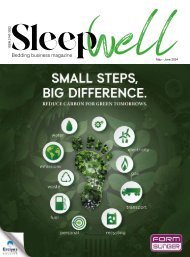Create successful ePaper yourself
Turn your PDF publications into a flip-book with our unique Google optimized e-Paper software.
96<br />
and the advances quite minor and specialized. Two excellent<br />
reviews have appeared and should be required reading<br />
HTE<br />
for those wishing to have a comprehensive understanding<br />
of treatment with flame-retardant finishes. This chapter will<br />
cover the same ground in a much more general way.<br />
EVENTS<br />
How are people exposed to flame-retardants?<br />
People can be exposed to flame retardants through a variety<br />
of ways, including diet; consumer products in the home,<br />
car, airplane, and workplace; and house dust.<br />
These chemicals can get into the air, water, and soil during<br />
manufacture. Chemicals can leak from products into dust<br />
and into the air.<br />
Dust can get on hands and food and then into the mouth<br />
when food is eaten.<br />
What are some of the potential health effects<br />
associated with flame-retardants?<br />
Although flame retardants can offer benefits when they are<br />
added to some products, a growing body of evidence shows<br />
that many of these chemicals are associated with adverse<br />
health effects in animals and humans, including endocrine<br />
and thyroid disruption, impacts to the immune system, reproductive<br />
toxicity, cancer, and adverse effects on fetal and<br />
child development and neurologic function.<br />
<strong>January</strong> <strong>2019</strong>

















